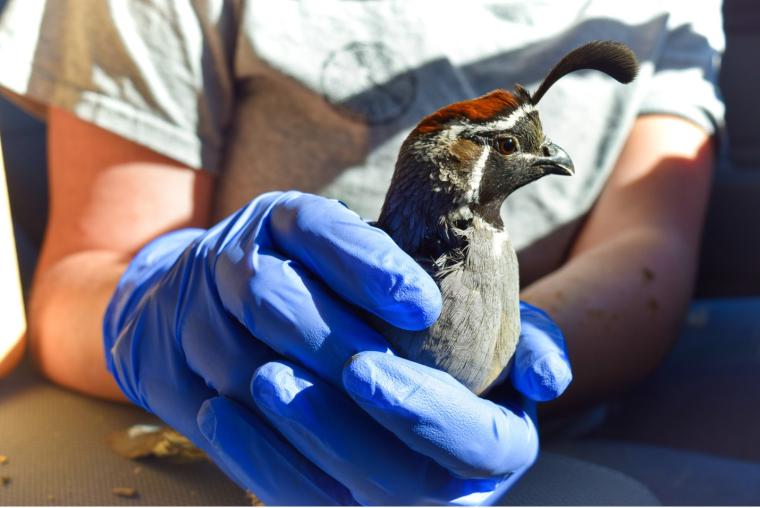Masters research on quail translocation published!
Picture1.jpg

Congratulations to Cherie Acevedo (née Nelson) on the publication of her master’s thesis! Acevedo worked with Arizona Game and Fish Department to assess the effectiveness of quail translocations.
Nelson_GAQU2.jpeg

Gambel’s quail (Callipepla gambelii) show signs of decline throughout Arizona, potentially due to prolonged drought and subsequent reduction in resources available. Urban and ex-urban populations of Gambel’s quail that inhabit golf courses, however, are cushioned from drought, and reliable year-round resources allow them to remain abundant. Acevedo investigated whether translocation of urban quail could be a viable tool for augmenting rural populations. She released and tracked Gambel’s quail at two different ranches in southeast Arizona to monitor survival and reproductive success of translocated individuals.
Nelson_GAQU.jpeg

Published in The Journal of Wildlife Management, she found that survival and reproduction of translocated individuals varied by site. One site exhibited high survival but low reproduction, and the other site vice versa. Those individuals that survived translocation did not necessarily reproduce, which could limit the efficacy of using translocation to increase populations. Translocation may be more successful on local scales where quail have been extirpated. Acevedo’s study also identifies important characteristics for release sites, which may increase likelihood of success.
Now that Acevedo has graduated with her master’s, she is teaching fifth grade and focusing on family, while leaving her options open for the future.

